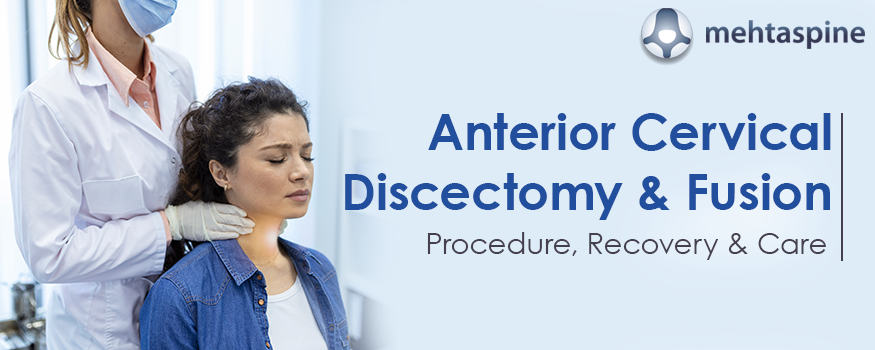Anterior Cervical Discectomy & Fusion: Procedure, Recovery & Care
Anterior cervical discectomy and fusion (ACDF) with fixation is a not unusual place surgical treatment is completed to treat neck pain and related symptoms caused by degenerative changes in the cervical spine.
This procedure involves removing a damaged or herniated disc from the neck and fusing two or more vertebrae using a bone graft and metal plates or screws to stabilize the spine. Here’s what you need to know about ACDF, including the procedure, recovery, and care.
The Procedure
ACDF is typically performed under general anesthesia, and the procedure usually takes about 1-2 hours to complete. Here are the basic steps involved in the procedure:
- Incision – A small incision is made in the front of the neck to access the cervical spine.
- Discectomy – The damaged or herniated disc is removed from the neck, relieving pressure on the spinal cord or nerve roots.
- Fusion – A bone graft is inserted into the space where the disc was removed, promoting new bone growth and fusing the adjacent vertebrae. Metal plates or screws are also used to provide additional stability and support.
- Closure – The incision is closed with sutures or staples, and a bandage is applied to the neck.
Recovery and Care
After ACDF, patients usually spend a few days in the hospital for observation and pain management. Here are some important things to know about the recovery process:
- Pain – Pain after ACDF is common and can be managed with medication prescribed by your doctor.
- Post-Op Care – Follow your doctor’s instructions carefully, including wound care and physical therapy exercises.
- Full Recovery – It may take several weeks or months to fully recover from ACDF. During this time, it’s important to avoid heavy lifting, bending, or twisting your neck, and to use a neck brace or collar as directed.
Anterior & Posterior for Scoliosis Correction UK
Scoliosis is a spinal deformity that causes the backbone to curl sideways. In some cases, surgery may be necessary to correct scoliosis and prevent further progression of the condition. There are two main types of surgery for scoliosis: anterior and posterior.
Anterior scoliosis correction involves accessing the spine from the front of the body, while posterior correction involves accessing the spine from the back. The choice of surgery depends on several factors, including the location and severity of the curve, the patient’s age and health, and the surgeon’s expertise.
Orthopedic Spine Surgeons UK
If you require spinal surgery for scoliosis or another condition, it’s important to choose a qualified and experienced surgeon who specializes in spinal deformity correction. Mehta Spine, possesses a team of expert spinal deformity surgeons UK who are dedicated to providing the highest level of care for our patients.
The surgeons have years of experience in treating complex spinal conditions, including scoliosis, and use the latest techniques and technologies to achieve the best possible outcomes for the patients.
Expert in Deformity Correction UK
Mehta Spine is committed to providing the patients with the highest level of care and expertise in spinal deformity correction. The specialist team offers a range of treatments and procedures for spinal conditions, including ACDF and scoliosis correction, and works closely with the patients to develop personalized treatment plans that meet their unique needs. To learn more about Mehta Spine and the services offered, visit the official website today!


